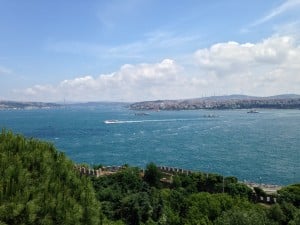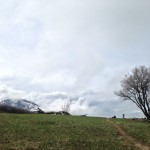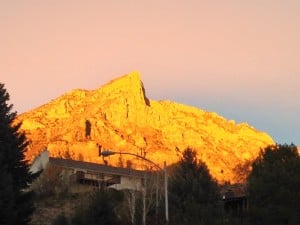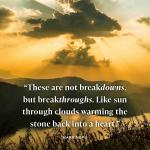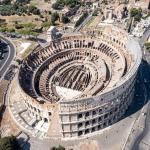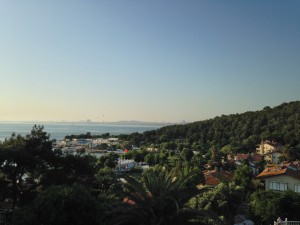
The Halki Summit ended after a provocative and fruitful discussion of the role the arts can play in helping religious cultures to address climate change. I still think the most impassioned and well reasoned explanation about how theology, art, and the environment intersect was offered by Father John Chryssavgis at the outset of the summit. He articulated an understanding of the relationship between science and religion that allowed for their differences and for the mysterious nature of creation itself: “If they are to be true to themselves, both science and religion must accept that every revelation of reality – whether religious or scientific – can only make sense if the world is respected in its mysterious, holistic integrity. Religion and science alike must disabuse themselves of their exclusive, esoteric parlance, which render it difficult, if not impossible, to develop an ecological grammar or vocabulary that would involve all religions and all disciplines.”
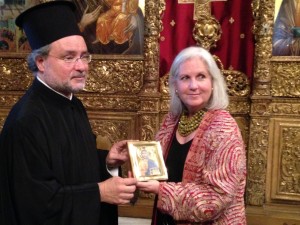
This humility that each way of knowing must have manifests itself in respect for the mystery, complexity, and interdependence of all life. And he advocates, rightly, that art serve as a bridge that can help to astonish, surprise, and awake us from customary ways of apprehending the world. The challenge is to see the divine and the earthly in close relation and to learn to see across cultures. The arts are unique in this sense. Often inspired by earthly beauty or divine light, or both, the arts speak across cultures and across beliefs. They help to expand our understanding of community beyond the known and the familiar. This is essential in our quest to find solidarity with others across the globe in our fight to mitigate the worst effects of climate change.
What followed over the course of the next three days was a series of keynote addresses and responses from participants, formal and informal. You can see a summary of the participants here. The keynote speakers were often speaking from their strong points, either as artists, environmentalists, or theologians but rarely from all three perspectives at once. Conversation flowed freely, sometimes with strongly held differences of opinion, either about matters of theology or art. Rarely was there disagreement about the problems of the environment. For example, in addition to hearing from Terry Tempest Williams (who was emotionally powerful, humble, and accessible) and Alisha Anderson, whom I have already described, we heard fascinating presentations by James Balog (of Chasing Ice fame) about disappearing glaciers, Raj Patel about finding sustainable solutions to food crises in the developing world. Terry Eagleton, a well known Marxist literary critic who has recently made a turn to defending religion, spoke on his understanding of the human/nature divide based on his best reading of biblical tradition and good reasoning. Timothy Gorringe described the role the arts can play in transforming our culture to become more sustainable.
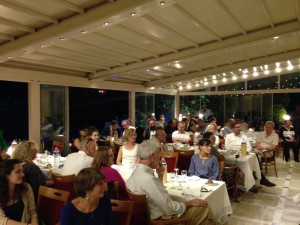
There was a pattern to discussion topics that ensued, mainly circling around the following questions: What exactly are the theological grounds for caring for the environment and for needing art? What can the arts do? What are their limits? Why, if they are often in a marginal position, can we expect them to make a difference? Is the special moral function of art still something we can believe in? There was no final consensus on these questions. Indeed, some participants seemed dismayed by the disagreement itself. But as I mentioned, there was little disagreement about the urgency and import of changing our culture to respond to the crisis we face. I took considerable inspiration from this fact. This agreement was clearly what brought the group together and kept the conversations, which were intense and prolonged, from devolving into deep ideological divisions. I think there is a lesson in that.
As I have said a few times on this blog before, I have often thought that the true test of character and perhaps of the sincerity of one’s commitment to high principles is how willing one is to be forbearing toward those who see things differently. If the drive is to convince others of your point of view, even to the point of arguing endlessly and needlessly in the face of unchanging opposition, you will have endless and needless work ahead of you. If instead you can work, at least some of the time, on finding common ground and making the quest about the quest and not about yourself, something good might come of it. The environmental crisis is, of course, the literal common ground we share with one another and is the ultimate test of how well we will do in the test. We have to ask ourselves: Are we more motivated to make a difference for the earth or are we more motivated to demonstrate to others that we are right? The former requires getting our ego out of the equation as much as we can, and it has proved no easy thing for me and most people I know. Indeed, the higher the stakes and the more we know, sometimes we find ourselves less and less tolerant of others and more content to do all the talking.
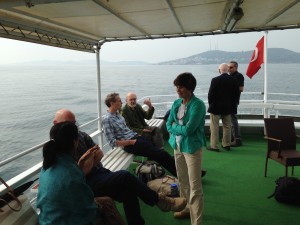
Don’t get me wrong. I am NOT saying we should leave our passions aside or that we should shy away from argumentation when both are necessary to change opinion, to motivate others, and to condemn evil, apathy, and willed ignorance when they are at play. And they almost always are when great problems emerge. But it is also important to understand, when it comes to “solving” environmental problems that complex problems like climate change are not going to be “solved,” least of all through simple one-size-fits-all solutions. We can mitigate its worst consequences, but climate change is here to stay. That isn’t to say we should shrug our shoulders and do nothing. There is still a great deal at stake, but perhaps it helps to remember that we are all in this together and that no one is without sin, so to speak. And maybe this gives us some pause to consider the value of letting cultures and communities find their own pathway to greater sustainability, rather than engaging in predictable culture wars over religion and science, or over liberal and conservative values. Such debates are not only nauseatingly boring, but they expend needed energy to forge goodwill across cultures. Among our goals for sustainability, we need to figure out how to sustain this kind of energy, since it is vital to our future. I came away from the Halki Summit immensely inspired by the many examples of good will I witnessed and by the extraordinary lifelong efforts made by so many, in so many different cultural, religious, and political contexts, to make a difference.
I have said it before and I will say it again: working for the common ground of our environment has expanded my community and my circle of friends to include many beautiful places and just as many beautiful people. As a Mormon and a Utahn, I have unique perspectives to bring to the table. This was confirmed for me at such an international occasion as this. But as such I also have many opportunities to learn from others and expand my understanding of what the world offers. This in turn expands my own self-understanding. I recommend this kind of work to one and all.
